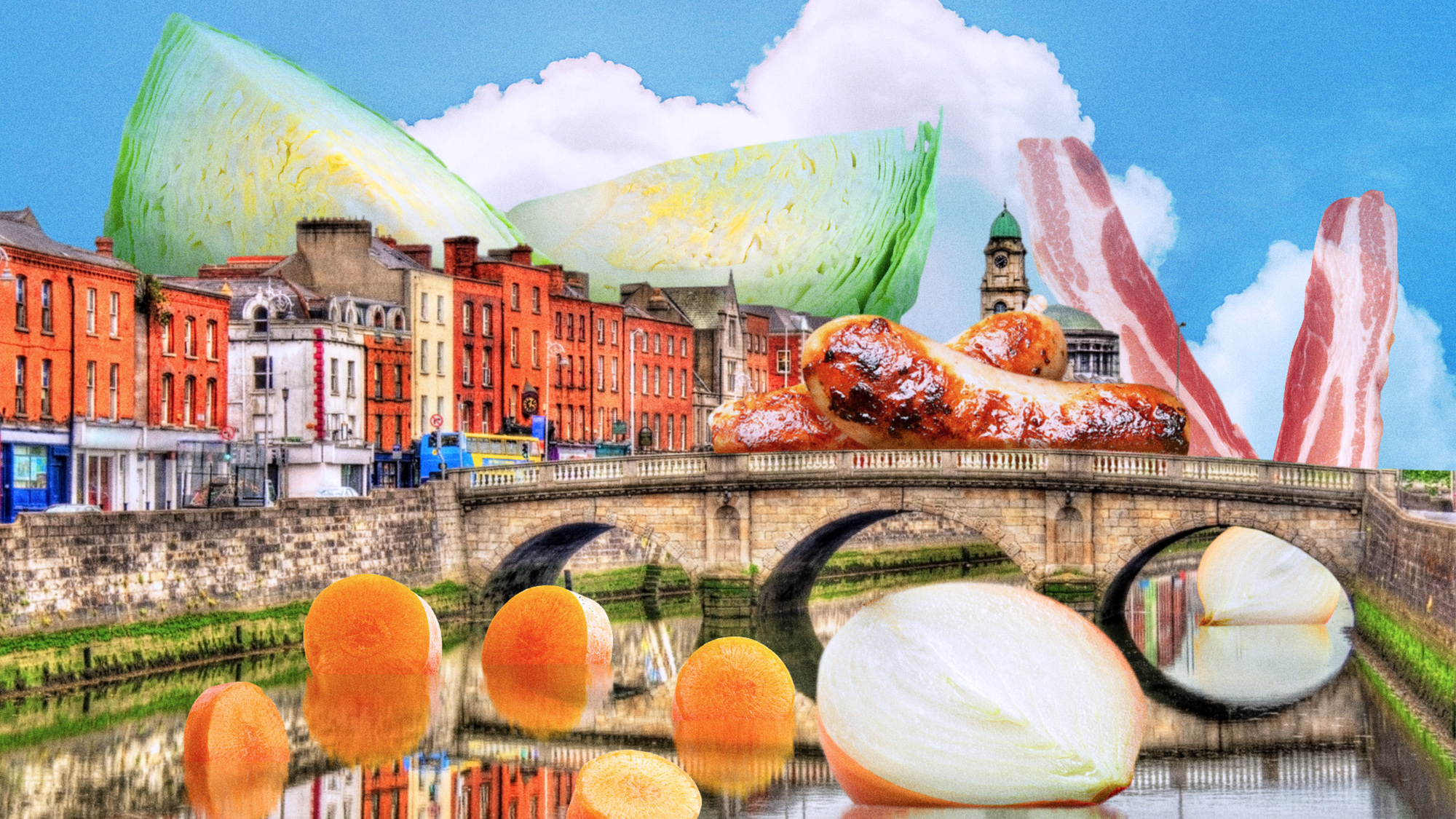This St. Paddy's Day, Comfort Yourself With A Bowl Of Dublin Coddle
I would never try to deny corned beef and cabbage its place as the official meal of St. Patrick's Day in America. I respect its tradition and most importantly, its deliciousness. But if you fancy a faster but no less hearty route to the Emerald Isle, allow me to lift the lid on Dublin coddle.
Akin to the long-cooked French pot-au-feu, Dublin coddle stars sturdy vegetables and inexpensive meats simmered in water until a fragrant and heady broth steams forth. Coddle implies homey comfort, a favorite warming dinner made with ingredients readily within reach of an Irish cook: sausage, bacon, onions, and potatoes.
My first introduction to Dublin coddle was through Darina Allen's book Irish Traditional Cooking. Since then, I've come across it in a few other Irish books, and throughout the internet's web of Irish recipes. The origins are always a little vague or perhaps just underrepresented since it's such a plain dish usually just made by Irish mamas.
Many traditional British and Irish sausages feature pale, finely ground meats, mainly pork, that are subtly spiced with seasonings I usually equate with medieval spice boxes: allspice, nutmeg, mace, pepper. Bangers, which are relatively easy to find at butcher shops, often contain "rusk," which is a padding of sorts made from wheat flour, salt, and a rising agent. In addition to being filling, rusk allows a more tender sausage, acting as spacers between the meat fibers. Because rusk absorbs liquid and swells, it often bursts the sausage casings, putting the "bang" in bangers.
The sausage and bacon pieces will look rather unlovely when they finish cooking, but their taste will win you over. Eat a deep bowl of it by a crackling turf fire or, if you can't manage that, some battery-operated candles, since even fake firelight makes everything better looking.
Because Dublin Coddle is such a home cook's dish, the recipe can be played a little fast and loose, within reason of course—by which I mean, don't add langoustines and habaneros. I add carrots to mine, both for the sweetness they add to the broth and because they're a colorful element to brighten the drab-looking dish. Turnips, rutabaga, and cabbage would all be welcome.
The two or three onions called for might seem like a lot, but I encourage you to use them all. The flavor is not overwhelming, but rather a balanced counterpoint to all the salty meats.
A dab of brown sauce is a popular accompaniment to a bowl of Dublin Coddle, but I like my mild sausages with sharp mustard, which also sings along with the carrots.
Once you've eaten all the meats and chunky vegetables, don't throw away any leftover broth. I strained mine and used it the next day in what I now refer to as the best tomato soup I've ever made. The coddle just keeps on giving.

Dwyer’s Dublin Coddle
Serves 4Cooking time: 1 hour
- 4 mild sausages, preferably British or Irish style
- 4-6 slices thick cut bacon
- 4 medium sized Yukon Gold potatoes
- 2-3 medium onions, cut into large wedges
- 2 carrots, peeled and trimmed
- Salt and pepper to taste
- Minced parsley or chives for garnish (optional)
In a large pot with a lid, layer the potatoes, onions, bacon, sausage, and whole carrots. Pour cold water over the ingredients until covered by an inch. Bring to a boil, cover with a lid, and simmer. If necessary, skim briefly to remove any impurities from the sausages that float about.
After 30 minutes remove the carrots if they are tender. In order to avoid an overly sweet flavor, I take them out, cut them in large chunks, and and set aside to rewarm in the broth later.
After another 15 minutes begin checking the the potatoes for tenderness. Taste the broth for seasoning, and adjust salt if needed. With the lid off, simmer the pot more rapidly for another 15 minutes to reduce the broth a bit. Add carrots to rewarm briefly.
Distribute sausages, bacon, onions, potatoes, and carrot chunks into four deep soup bowls, pouring the broth over. Garnish with parsley or chives, if using. A sprinkle of chopped parsley or chives at the end lifts the dish, but just a grinding of fresh pepper is perfectly fine.
Serve with heartily buttered bread and beer. Offer sharp mustard or brown sauce on the side.
